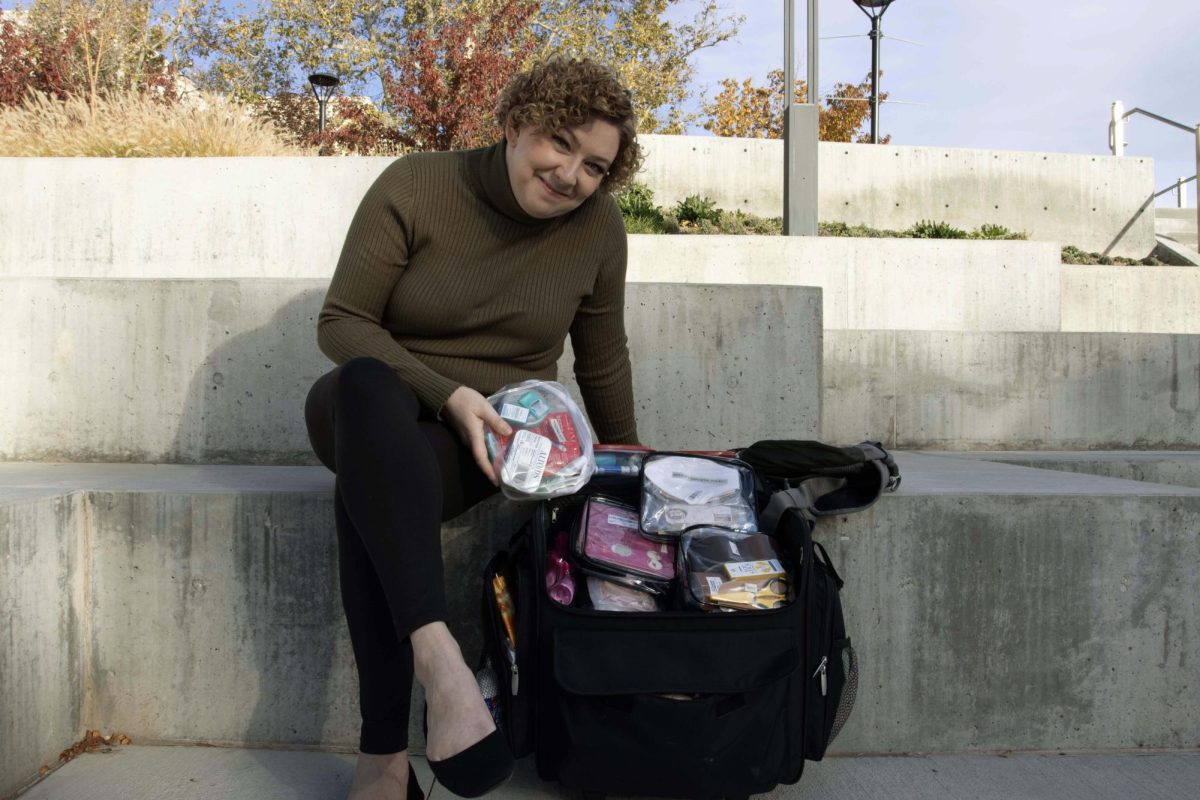Liz Whittaker has been in the theater business for over 20 years. Most of this time was spent acting with the occasional job as a director or sound designer. Then, one day in 2018, Whittaker’s friend invited her to join a workshop about intimacy direction. Whittaker’s interest was sparked immediately. She saw how her passions for storytelling, social justice and mental health advocacy could all be combined in working as an intimacy professional.
Since then, Whittaker has spent the last three years developing a career as an intimacy director.
“An intimacy director helps choreograph scenes of intimacy,” Whittaker said. “The kind of closest parallel to this role is like a stunt coordinator or fight director.”
Whittaker’s role as an intimacy director is twofold. While working with actors to develop a story with their body language and movements, she also helps actors develop skills to communicate their boundaries and speak up for themselves.
Vulnerability
Having only been practiced in the past 10-15 years years, according to the University of Rochester, intimacy direction is a relatively new career in the theater industry.
“[I think] a really major part of why intimacy direction exists as an industry now more efficiently than it ever has is there’s room for so much abuse of power,” Whittaker said.
Whittaker explained that directors have power over actors that is often exploited.
“It’s really easy for directors and teachers and people in power to be like, ‘No, push yourself further, push yourself further, give me more, give me more,’” Whittaker explained.
As an actor, you’re using your body to tell someone else’s story. In these moments, you can be left feeling especially vulnerable as someone else tells you how to perform. Having an intimacy director on set can help disrupt this power dynamic by moderating how directors and actors go about their work. Acting out intimate scenes can feel especially vulnerable, but having an intimacy director choreograph these scenes can help them feel less personally revealing for actors.
“You don’t have to bring your own personal sexual experiences into this role,” Whittaker said. “I can tell you what to do with your voice. I can tell you what to do with your body. It will still be your body, which is vulnerable, but you don’t have to make it real.”
An Empowered Space
When working on a project, Whittaker said she doesn’t focus on creating a “safe” space so much as she aims to create an “empowered” space.
Creating a safe space could mean going to every actor individually, asking them about their boundaries and triggers and then sharing these details with everyone else in the crew. Theoretically, this might eliminate the risk of someone’s boundaries being pushed. Realistically, it would be impossible to implement.
“What I’m more interested in is creating a space where actors are given the time, the space and the tools to speak up for themselves,” Whittaker explained.
To do this, Whittaker gives actors example phrases they can use when they need to express a boundary. She helps facilitate conversations about boundaries between actors. Whittaker also helps actors care for their well-being by teaching them different kinds of exercises they can do to start or end their work, or to just check-in. One of these is a closure exercise aimed at helping actors separate their roles from their real lives.
“Closure is a way to tell our brains and our bodies that what we were just doing is not real,” Whittaker explained. Sometimes, our brains and bodies can’t always tell the difference.
Storytelling Bodies
“Every body is a storytelling body,” Whittaker said. Eye contact, the way someone grabs another character or the way a character breathes after being touched all work to convey a story.
“If you’re just looking at your drink while you’re saying that line, it means that you don’t actually care. But if you’re holding your drink and making direct eye contact, that tells a different story,” Whittaker said.
It’s these kinds of details that Whittaker looks at as she choreographs intimate scenes between characters. For example, if you use your pointer finger to trace along someone’s body, that conveys possessiveness, whereas if you use your whole hand, that conveys tenderness.
“Is this a moment of non-consent or assault, or this is a moment of uncertain consent?” Whittaker uses these questions about the story she’s conveying to inform what kind of movements to incorporate into her choreography.




